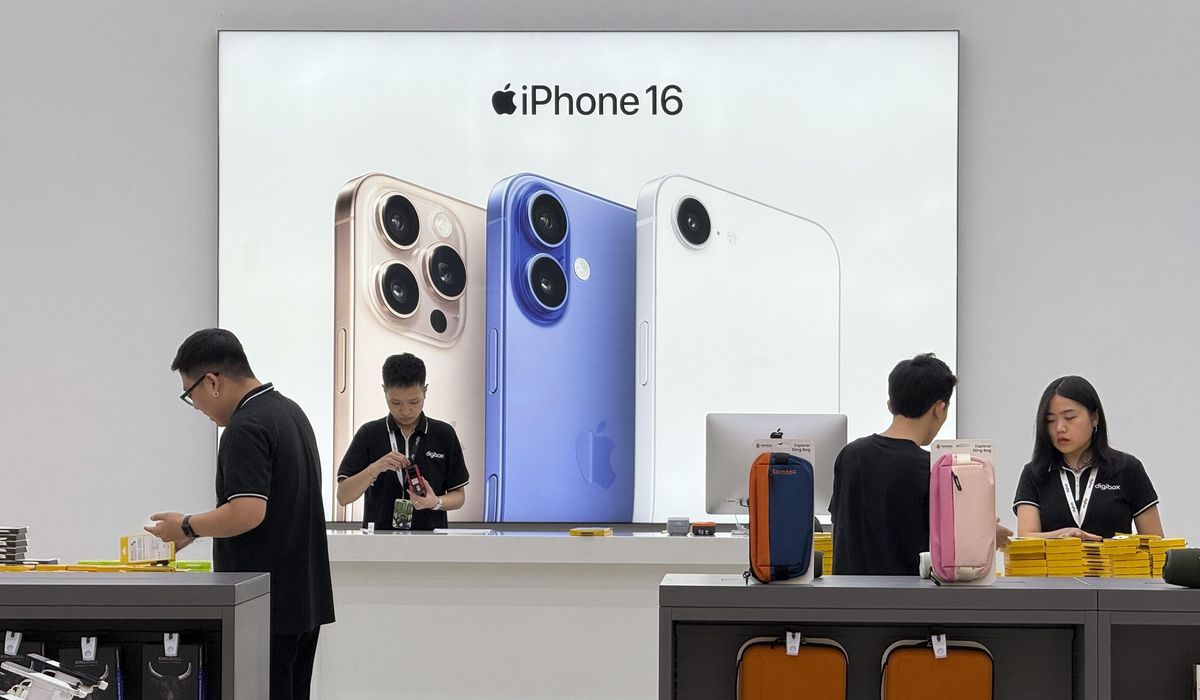


President Trump is threatening to impose a 25% tariff on Apple iPhones made outside the U.S., saying he warned the major U.S. tech company to onshore production instead of shifting it around overseas.
Mr. Trump is upset that Apple, which has long relied on China for manufacturing, was shifting some production to India.
“I have long ago informed [CEO] Tim Cook of Apple that I expect their iPhone’s that will be sold in the United States of America will be manufactured and built in the United States, not India, or anyplace else,” Mr. Trump wrote Friday on Truth Social. “If that is not the case, a Tariff of at least 25% must be paid by Apple to the U.S.”
Mr. Trump has maintained a close relationship with Mr. Cook and Apple, whose popular smartphones and other devices got exemptions from tariffs on China. Yet during a recent tour of the Middle East, the president said he had a “little problem” with the executive over iPhone production in India.
Apple uses overseas labor to tap into specific skill sets and keep costs down. Analysts say it is difficult to calculate how much a U.S.-made iPhone would cost, but some say an iPhone16Pro could retail for as much as $3,500 instead of closer to $1,000.
It is unclear how Mr. Trump would impose a tariff on the iPhone, specifically. Levies could be wrapped into nation-specific or sector-specific tariffs that the White House has issued or threatened to impose.
The Washington Times reached out to the White House for specifics and to Apple for comment on the tariff threat
Also Friday, Mr. Trump said trade negotiations with the European Union are going nowhere, and he will recommend a 50% tariff on products that enter the U.S. from the bloc of 27 countries.
Mr. Trump said the EU has been “very difficult to deal with” and imposes too many trade barriers, penalties and taxes on U.S.-made goods.
“Our discussions with them are going nowhere!” he wrote Friday on Truth Social. “Therefore, I am recommending a straight 50% Tariff on the European Union, starting on June 1, 2025. There is no Tariff if the product is built or manufactured in the United States.”
If enacted, the tariffs could impact a wide range of European products that Americans buy, from wine and cheese to furniture, clothing and other goods.
The U.S. had a trade deficit — the amount by which EU exports to the U.S. exceeded U.S. exports to the EU — of more than $235.6 billion in 2024, according to the Office of the U.S. Trade Representative.
Mr. Trump is upset about trade deficits, saying other nations are tapping into a rich U.S. marketplace but refusing to buy much from American producers. He wants to reduce trade deficits through tariffs, which are a tax or duty paid by importers on the goods they bring in from foreign markets.
Mr. Trump says tariffs are a great way to force companies to return to America or keep their operations in the U.S., employ American workers and create revenue to fund domestic programs.
Foreign countries don’t pay the tariffs directly to the U.S. Treasury. In many cases, U.S. companies will pay the levies, and they might pass on at least some of the cost to consumers through higher prices.
Wall Street reacted poorly to the tariff threats, with Dow Futures dropping more than 400 points.
Previously, Mr. Trump proposed a 20% reciprocal tariff on the EU as part of his “Liberation Day” plan.
The president has floated new tariff levels before, only for the amount to change.
For instance, Mr. Trump proposed an 80% tariff on China ahead of de-escalation talks in Switzerland, only for his trade team to land on 30% after negotiations.
• Tom Howell Jr. can be reached at thowell@washingtontimes.com.
